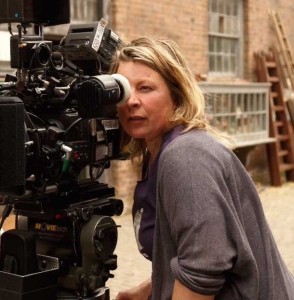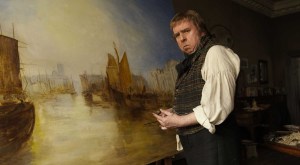
Mike Leigh‘s Mr. Turner explores the life of eccentric painter J.M.W. Turner. Working without a script, Leigh crafted the story from rehearsals with the actors. The process of working without a script was an interesting one, especially for production designer Suzie Davies. Best known for her work on The Children (2008), Davies was enthralled by the idea of making a film about Turner with another artist she admired, Mike Leigh.
Once on board, Davies threw herself into the design process, starting with the research. Without a script to draw from, the production designer took her inspiration directly from Turner’s artwork. “I went to this fantastic gallery called Clore Gallery at the Tate in London where Turner’s bequest is held now,” Davies said. “All of Turner’s artwork, paintings and sketchbooks are in this particular gallery, apart from the ones that are privately owned. It’s a fantastic resource so I spent many, many days just wandering around and getting excited about the possibilities of creating the essence of this artist.”
Davies soaked up the colors in Turner’s artwork and applied them wholeheartedly to her designs. She didn’t shy away from colors of any kind. “The man embraced color and I believe he would have done the same in his life, in his surroundings,” she explained. “When you look at his paintings, you absolutely see that he saw the full gamut of life’s colors.”

Davies’ favorite recreation for the film was the summer exhibit at the Royal Academy in 1832. There were 250 paintings to make, a location to find and a limited budget. The challenge didn’t faze Davies in the least. It was a task she took on with excitement and the finished result was breathtaking. “When we were making it, right after I finished dressing the set, and we had it ready for the actors to walk onto, myself and the members of the art department were able to wander around on this fully dressed set one evening,” Davies recalled. “It was like going to our own private exhibition. It was quite surreal. We reproduced all these amazingly famous paintings from the galleries around the U.K. and here they were, put back how it would have been in 1832 and it was quite extraordinary, a real spine-tingling moment.”
Another wonderful moment Davies experienced during the production design process was observing the actors inhabit her set. She loved handing over the completed sets to Leigh and the actors. “Once we’d built the set and dressed it and it was ready to go, the actors came onto the set in costume and inhabited it and really made it feel lived in. The actors spent days living in the Holly Street house pretending to be the characters, going about their daily work as if they were living there. I was really privileged to watch them inhabit the set.”





